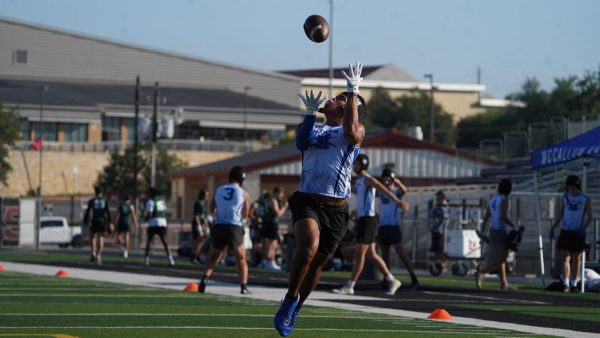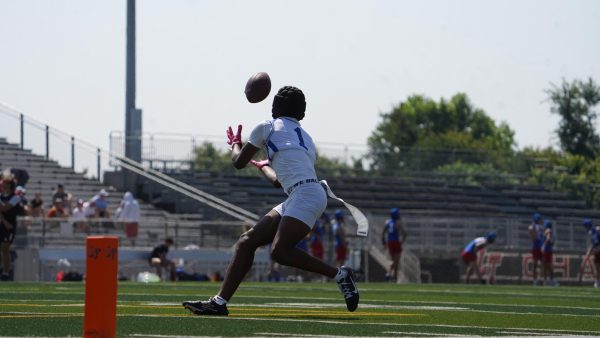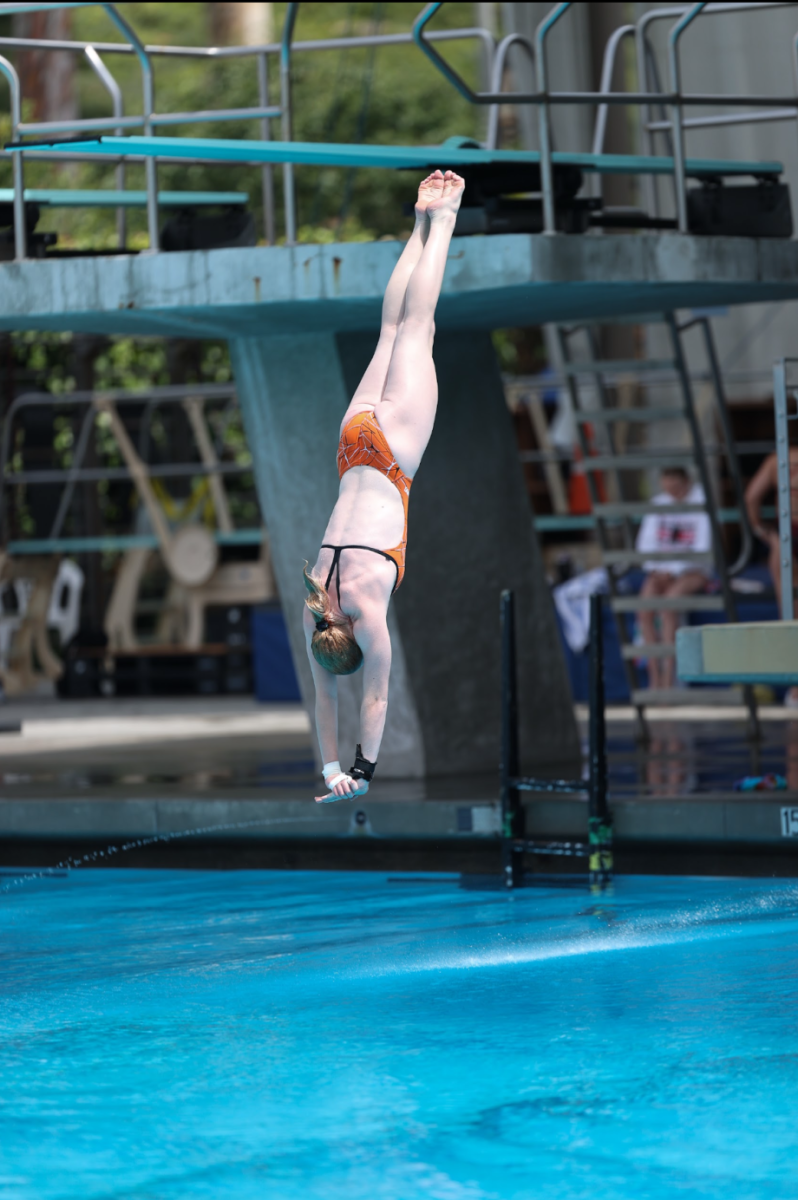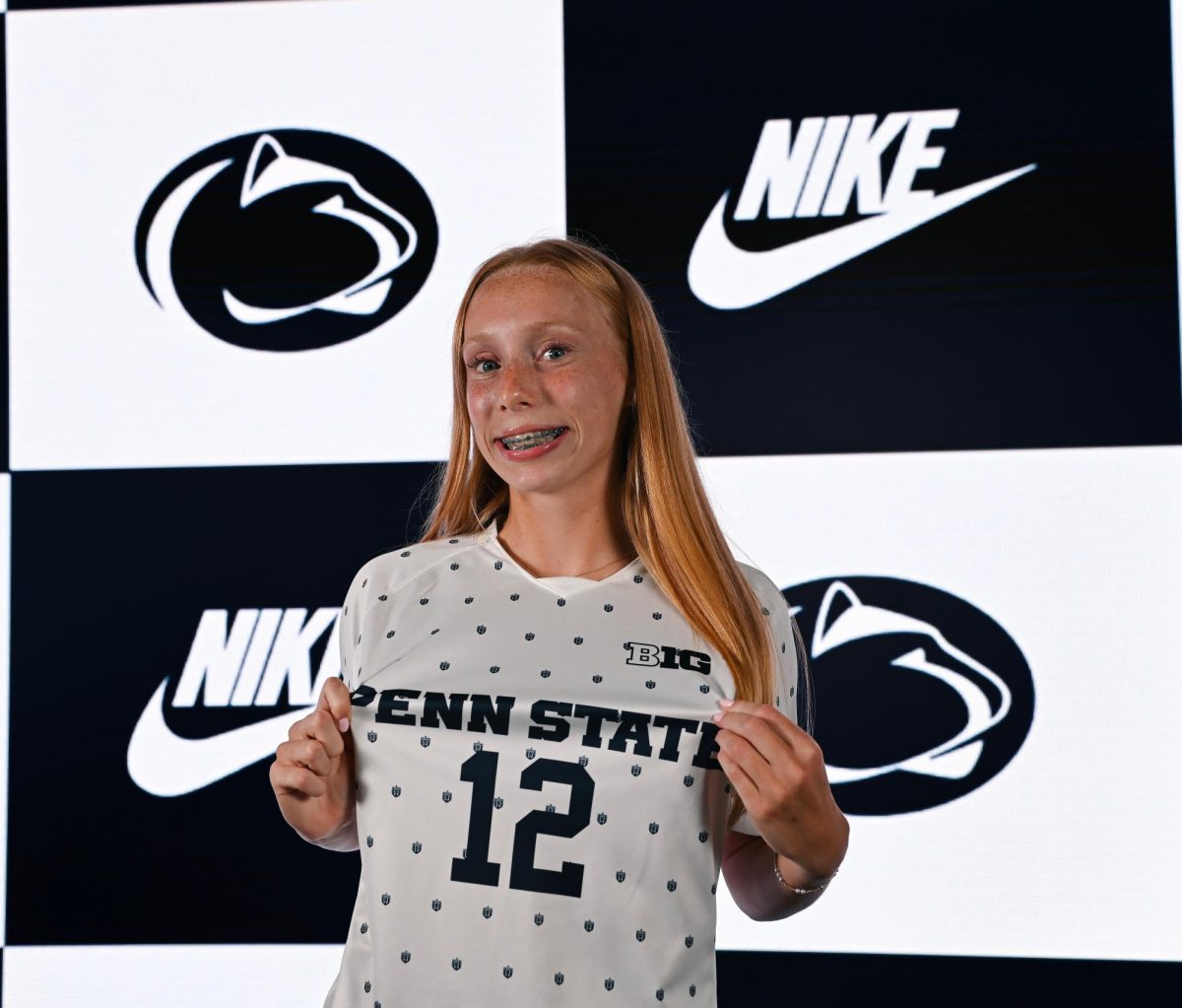Prior to the 1990s, Texas high school football, and football in general, was a contact-heavy sport. It still is, but the nature of the game was different then. National Football League (NFL) greats like Lawrence Taylor and Derrick Thomas were stars of their era because they knew how to tackle, and they knew how to run the ball. The Lewisville Fighting Farmers, Texas state football champions in 1993 and 1996, said that their tactic for winning during that time was to rush, rather than pass. But, late in the ’90s, with a new century on the horizon, the nature of football began to change. The NFL made a series of rule changes that encouraged passing rather than rushing, and the technique of quarterbacks throwing the ball far down the field started to become the more popular offensive option that we see today.
Texas ‘passes’ California to regain football supremacy

During this era of change for football, a man named Doug Stevens picked up a copy of the Dallas Morning News and read an article analyzing where NFL players went to high school, and it had California at the top of the list, just in front of Texas. California was especially in front of Texas on the quarterback front, producing more than double the number of professional quarterbacks in comparison to Texas. Stephens was curious as to what they were doing out on the West Coast that put them ahead of the traditional powerhouse that is Texas high school football. Their secret to success—a different kind of football, called 7-on-7.
7-on-7 football filters the game down to its modern core, passing. There’s no tackling, no rushing, no kicking, no blocking. Just passing. Seven players from each team take a shortened 45-yard field with soft shell helmets and take turns passing. The defensive side can legally end a play by grabbing the offensive player with one or two hands. The introduction of 7-on-7 in Texas changed the nature of high school football. Stephens’ introduction of California’s style of spring football contributed to the massive shift in football to a passing-oriented game, as well as putting Texas back on top for quarterback production. Former Philadelphia Eagles quarterback Nick Foles, a graduate of Westlake High School, attributes his success as a football player to growing up in Texas football, during the beginning of the 7-on-7 era.
What started as a 16-team tournament is now a fully-fledged professional organization, with about 128 teams qualifying. The Texas State 7-on-7 Organization, which is not associated with the University Interscholastic League (UIL) but is instead governed by a selection of coaches via Dave Campbell’s Texas Football, chooses the sites, organizes and administers all state-qualifying tournaments that are used to certify representatives to the Texas State Tournament that is held each summer. State qualifying tournaments (SQT’s) are held throughout the state, and range from eight to 32 teams. One team for every eight teams is sent to the State Tournament.
View this post on Instagram
McCallum enters the 7-on-7 fray
McCallum football has participated in the Lake Travis SQT the past four years (not including 2020, when the tournament was canceled), and did so for the fifth year this past Saturday on May 18. Last year, the Knights went 0-3 in pool play, so the goal for this year was to perhaps win a game or two. Never before has McCallum won its pool, let alone qualify for the state tournament.
The Lake Travis SQT brings 16 teams together, divided into four pools. The Knights were put in Pool A with four other teams; Akins, Lake Travis and Cedar Park. According to Dave Campbell’s, Lake Travis was predicted to win Pool A and move on to the State Tournament, as they have done for the past 19 years in a row. Everyone who comes in contact with Lake Travis in 7-on-7 aims to knock that streak, including McCallum. But before playing Lake Travis, they had to take care of business. McCallum opened the morning at 8 a.m. against the Akins Eagles, a fellow AISD team, but still a 6A opponent. Quarterback Luke Dunham says that they knew they had the potential to beat Akins by a large margin, so the key was to avoid errors.

“We knew we should blow them out, so it was mainly about doing our job,” Dunham said.
The Knights ended up beating the Eagles by 27 points and only allowing one touchdown, with a final score of 34-7.
Next, at 9:15 a.m. was the Knights’ most anticipated opponent, the Lake Travis Cavaliers. Dunham says the Cavaliers were their main opponent, and that game essentially determined who would be going to state. The Cavaliers opened strong, quickly gaining a 12-0 lead over the Knights. Dunham said that he knew the pressure was on to be perfect and not allow for any mistakes.
“Going into that game as a quarterback, I knew they would be bigger and faster,” Dunham said. “Every ball had to be in the right spot on time.”
As the Cavaliers quickly gained a lead over the Knights, Dunham says that the whole team realized what needed to be done.
“The defense came up huge to keep us in the game, and the offense got it done it clutch time,” Dunham said.
Key interceptions from junior Devon Robinson as well as long offensive plays from Dunham to junior Jaiden Booe allowed the Knights to come back from being down and become successful underdogs, defeating two-time 7-on-7 state champions in Lake Travis 20-19.
Dunham says that part of what made the Knights confident that they had the potential to beat the Cavaliers was playing previously in a 7-on-7 tournament hosted by Pflugerville Football Academy, where the Knights went 10-1, only losing to Dripping Springs 21-20 in the championship game.
“When we play bigger teams we don’t really think about it,” Dunham said. “In Pflugerville we got used to beating big schools with high rated athletes so we had confidence coming in.”
For the final game in pool play, the Knights played the Cedar Park Timberwolves. Dunham said that the key was to not overlook the potential of the teams they were playing.
“We were just focused on not underestimating the other teams and doing what it takes to advance,” Dunham said.
Again, Dunham’s long passes to various receivers as well as the defense stepping up to keep the Timberwolves at bay allowed the Knights to defeat Cedar Park 28-26. After beating Cedar Park, McCallum had won their pool and moved on to the State Qualifying Round. They were one game away from going to College Station for the first time in program history.
Knights face district foe with state bid on the line
In the State Qualifying Round, the Knights were matched up with the winner of Pool B, the Bastrop Bears, who will be a district opponent in football from now until 2026. The Knights had already defeated the Bears twice in 7-on-7 in Pflugerville, but again Dunham said that they needed not to underestimate Bastrop.
The Knights didn’t underestimate Bastrop; instead, they defeated Bastrop handily, 35-13, qualifying for the state tournament for the first time in program history.
When asked if McCallum gets underestimated, Dunham said “Definitely. Lake Travis put us on their schedule thinking they’d blow us out and qualify like last year.” I think it’s safe to say that Lake Travis might not be putting McCallum in their pool anymore.
As for the State Tournament, the Knights have about a month to prepare. Dunham says that many players have been getting training from private coaches, as well as putting in extra work in the weight room.
“Going into state we hope to make some noise and keep upsetting big schools,” Dunham said.
As of May 28, there are 23 teams who have qualified for the state tournament.
Even though Dave Campbell’s Texas Football predicted Lake Travis would be victorious yet again in their own tournament, they do say that “winning at 7-on-7 has a high (but not perfect) correlation to winning during the Texas high school football season.”








